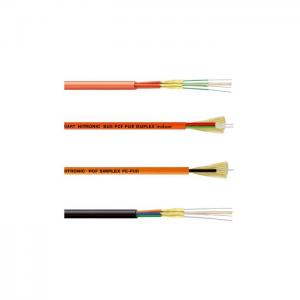MyWorldGo
CIRCUIT BREAKER: WHAT IS YOUR MECHANISM LIKE?
Blog Information
- منشور من طرف : Barbara Smith
- نشر على : Dec 29, 2021
- الآراء : 253
- الفئة : جنرال لواء
- وصف : The circuit breaker is a regulatory device for protection against overcurrent’s: overloads and short circuits. Its function is to act when a fault is detected, that is, to cut off the electricity or power supply to the installation and allow it to be restored when the anomaly has been solved.
نظرة عامة
- The circuit breaker is a regulatory device for protection against overcurrent’s: overloads and short circuits. Its function is to act when a fault is detected, that is, to cut off the electricity or power supply to the installation and allow it to be restored when the anomaly has been solved.The circuit breaker is used for switching and protection. It is a mechanical connection device capable of establishing, withstanding and interrupting currents under normal conditions, as well as withstanding for a time and cutting short-circuit currents. Due to its high breaking capacity, it can automatically disconnect overload or short-circuit currents before damaging effects occur.The circuit breakers are some essential devices in the modern world, and one of the most important safety mechanisms in any house, building or industry. When electrical wiring in a building has too much current, these simple elements cut it off until someone fixes the problem.Unlike fuses, which are for single use, an electrical circuit breaker or breaker can be reconnected as long as the causes that activated it have been resolved. In this way they assume the protection of electrical means against excessive heating. Each of the circuits that are installed has its own thermomagnetic circuit breaker. They are designed to withstand the current peaks that are generated during the ignition of electric motors.They can be divided into two large groups: those called "Small Automatic Switches" or PIAs and those called simply "Automatic Switches" or IAs.It is the small automatic switch (PIA), used in Low Voltage.How the Circuit Breaker Protects CircuitsThe circuit breaker protects electrical circuits against overloads (thermal) and short circuits (magneto).
- In case of overload, the deformation of the bimetallic sheet by the heat, causes the opening of the contacts. Thermal effect.
- In the event of a short circuit, the current flowing through the solenoid has a magnitude such that it causes the core to shift, which in turn causes the contacts to open. Magnetic cutting effect.
The thermal mechanism or device consists of a sheet made of two metals of different coefficient of expansion (bimetallic couple) that deforms due to the heat produced by the passage of current. When the current is strong enough, the deformation is enough to actuate the switch mechanism, activating the protection and interrupting the flow of current. Heating and deformation of the bimetallic are slow processes, so this mechanism is appropriate to respond to current overload.The magnetic mechanism or device is connected in series with the thermal one, so that both are traversed by the same current. It consists of a coil wound on a core of magnetic material, constituting an electromagnet. The passage of current produces a magnetic field that displaces the core of the electromagnet like the latch of an electric doorman. If the current is strong enough, the core actuates the mechanism and the switch opens. This occurs without delay, so this mechanism is apt to respond to short circuits.Circuit Breaker RatingsSwitches can be classified based on multiple criteria, such as:According to its function of use:- Power switches. They are those that are installed in the connection of an electrical panel from a transformer, a generator, another panel, etc. They must be coordinated with the distribution and load power switches to guarantee the selectivity of protections.
- Distribution switches. They protect the conductors that connect the panel to another point of the installation.
- Consumer switches. In this case the protection is direct, since it is located as close as possible to the load.
According to the type of use:- Industrial use
- Domestic use.
According to its construction type:- Modular circuit breakers. Commonly called PIA (small circuit breaker), they are typically used for final consumption, nominal current values up to 50 or 63 A, and low breaking powers.
- Molded case switches. They are more robust than modular switches, they are used for currents up to around 1000 A, and higher breaking powers.
- Air cut-off switches. Its use applies to the highest currents, up to around 6300 A, with the highest breaking powers. It is usually typical to use them in frames that exchange great power, or in their rush.
Types of electrical cables: what cables make up an electrical installation?
